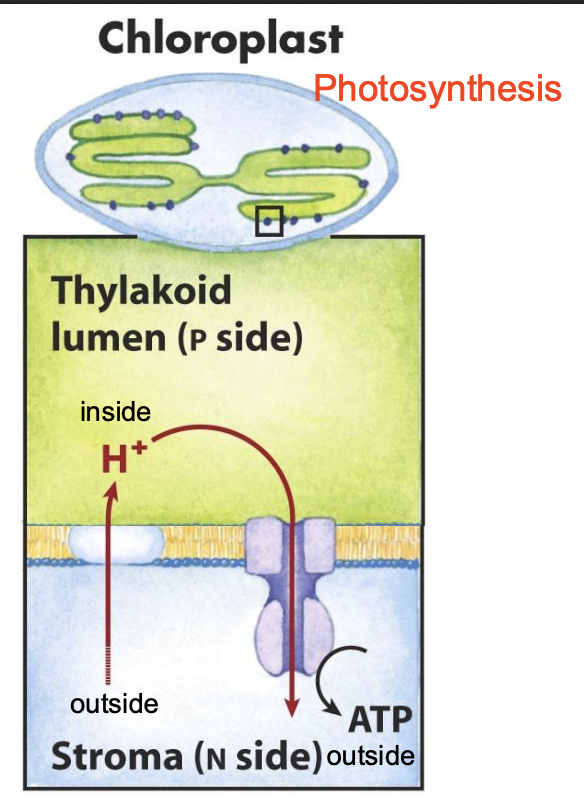Bio98 Lecture 18 ETC
1/17
There's no tags or description
Looks like no tags are added yet.
Name | Mastery | Learn | Test | Matching | Spaced |
|---|
No study sessions yet.
18 Terms
Oxidative metabolism
Glycolysis + PDH:
step 1: make pyruvate (3C)
step 2: make acetyl-CoA (2C)
TCA:
add 2C from acetyl-CoA to OAA to make citrate
burn 2C from citrate to regenerate OAA
Oxidative phosphorylation (OX-PHOS)
use all the e- generated in this process to make a bunch of ATP!
During glycolysis, electrons are stored as…
NADH.
-cannot cross the mitochondrial membrane.
REMINDER: electrons are not floating around in cells
Electron shuttle mechanism I: Glycerol phosphate shuttle
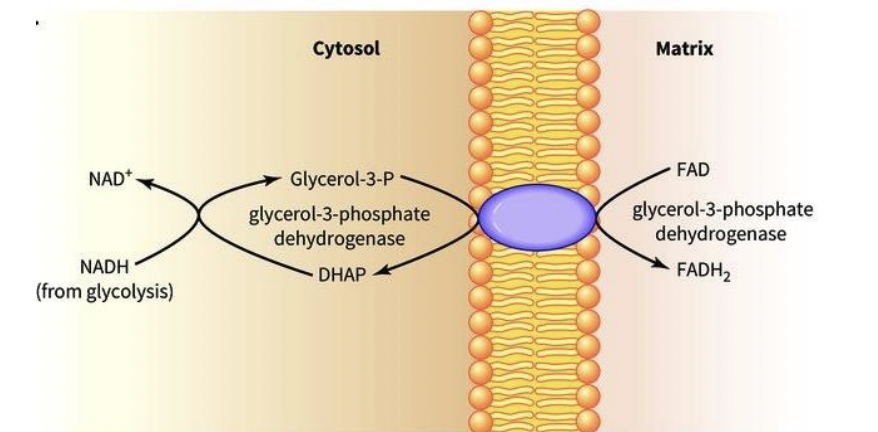
1) NADH (cytoplasmic) reduces DHAP to glycerol-3-phosphate (G3P)
2) G3P reduces FAD (mito) to FADH2 & G3P is oxidized back to DHAP
Electron shuttle mechanism II: Malate-aspartate shuttle (MAS)
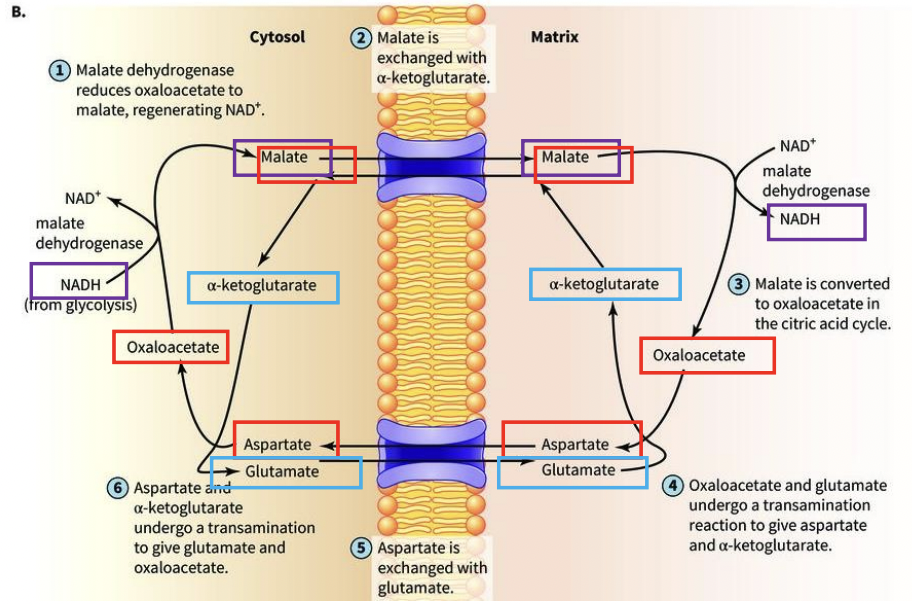
• Malate and aspartate are transported by exchange proteins, 1:1 ratio
Every malate into mitochondria = 1 αKG into cytosol
Every aspartate into cytosol = 1 glutamate into mitochondria
• αKG and glutamate are used to regenerate OAA and aspartate
How many complexes exist in ETC?
5 (Complex I-IV & ATP Synthase)
Redox Coupling (5 biological e- carriers)
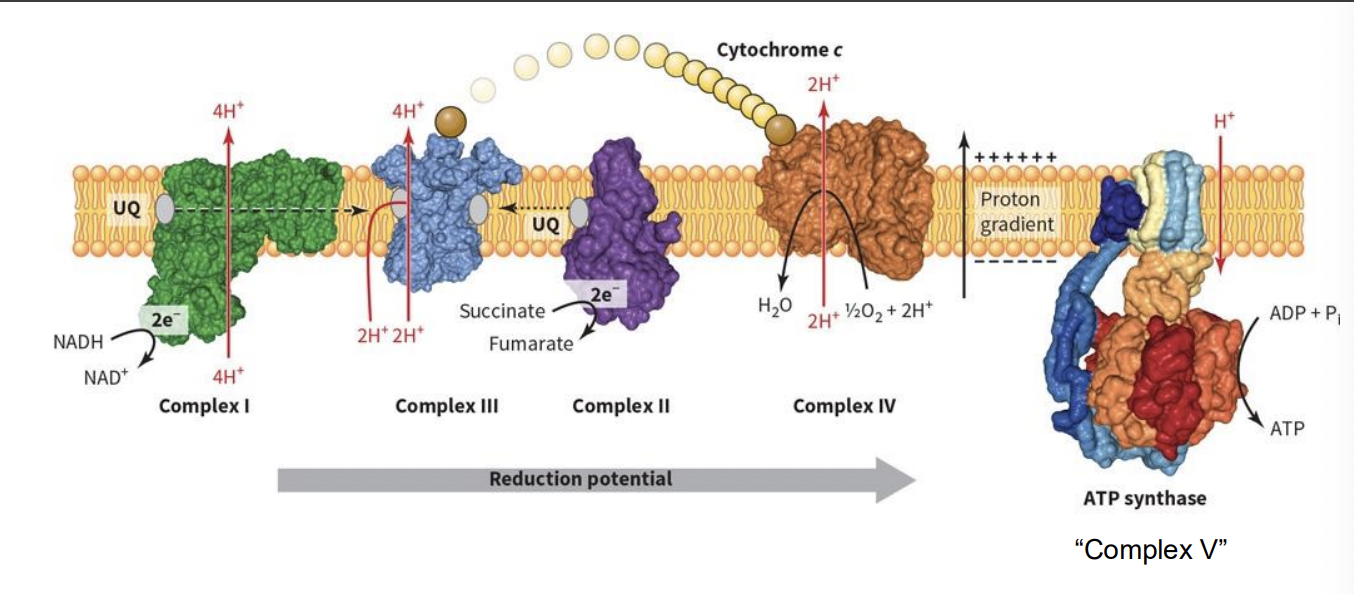
1) Pyridine linked Dehydrogenases
Free diffusable in cell
NAD+ ←→ NADH + H+
NADP+ ←→ NADPH + H+
^^ 2e-s^^
2) Flavin linked Dehydrogenases
tightly bound enzyme prosthetic groups
FMN ←→ NADH + H+
NADP ←→ NADPH + H+
^^ 2e-s^^
3) Inorganic FeS centers (No H+ No Heme)
Fe+++ ←→ Fe++ (1e-)
4) Cytochromes (Heme; no H+)
Fe+++ ←→ Fe++
Cu++ ←→ Cu+
5) Ubiquinone (Coenzyme Q)
H+ and e- (one at a time)
membrane restricted, but shuttles e- between different membrane bound complexes
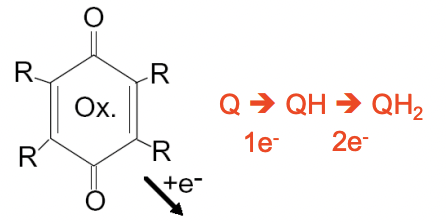
3 redox states of CoQ/ubiquinone
1) fully oxidized (ubiquinone)
2) semiquinone (semiubiquinone)
3) fully reduced (ubiquinol)
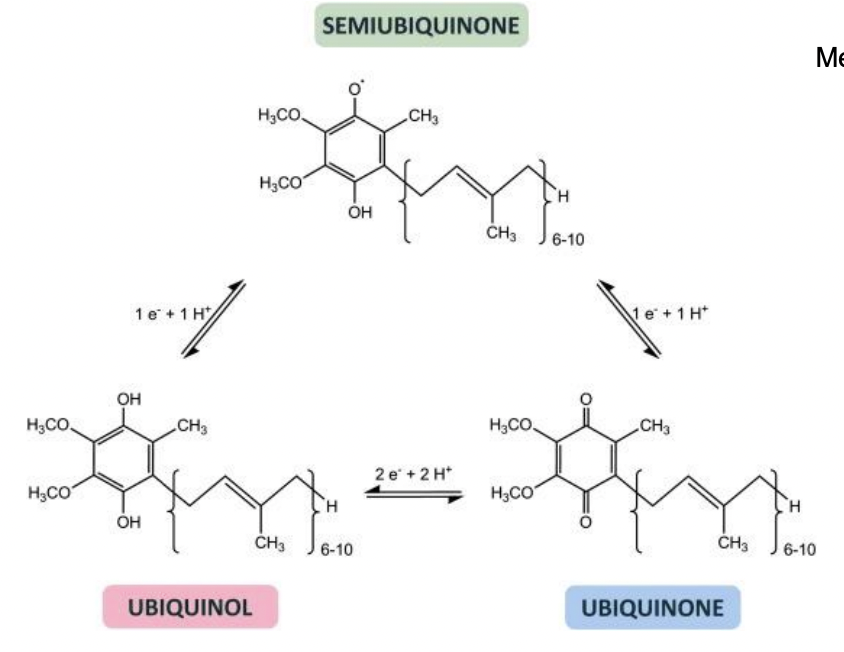
capacity for both 1e- and 2e- transfer
necessary cofactor bc part of ETC can only accept 1e- at a time.
membrane restricted due to its long prenyl tail (~40 carbons in length)
Proton Motive Force
Proton pumps shoots H+ from N sire (matrix) to P side (intermembrane space).
-movement of protons across membranes downhill the electrochemical gradient.
Complexs I, III, and IV: ?
Complex V: ?
Two mobile electron carriers: ?
NADH pumps ?
FADH2 pumps ?
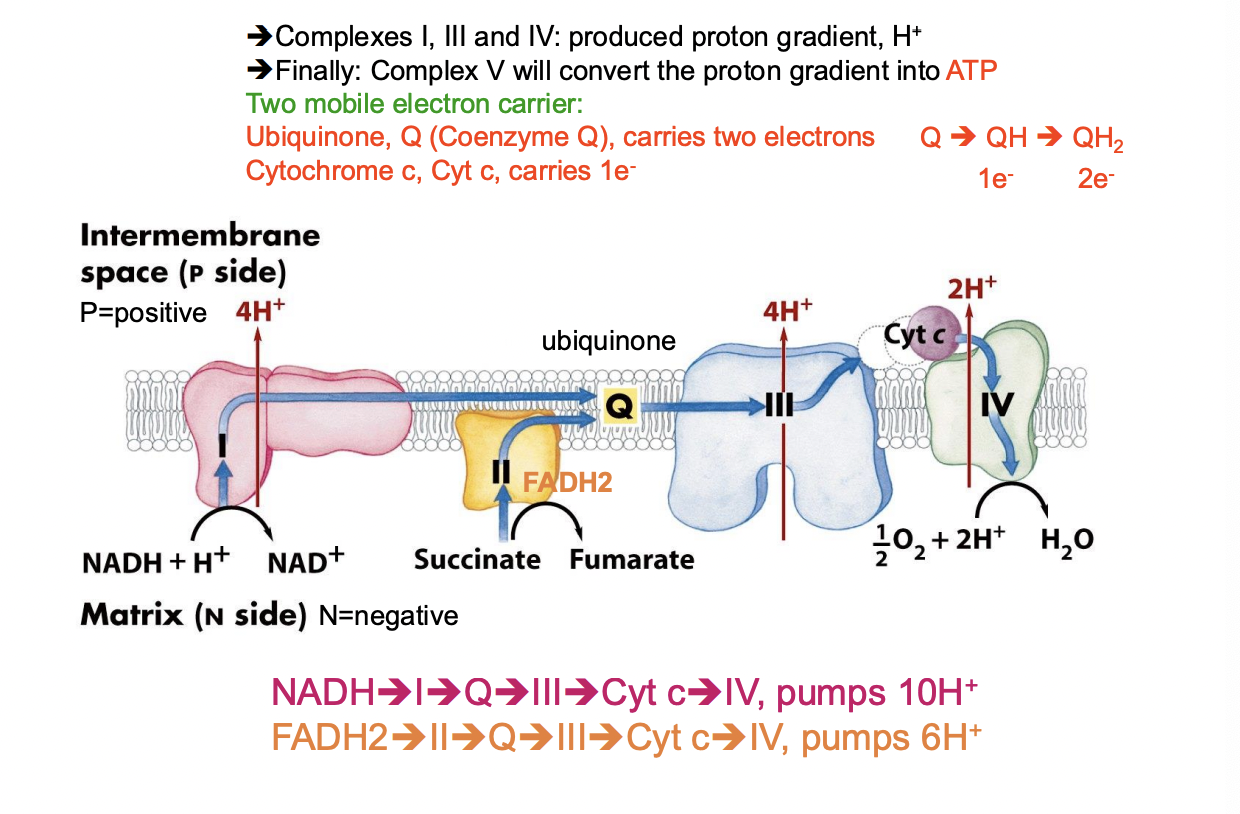
Complexs I, III, and IV: produced proton gradient
Complex V: (ATP Synthase) converts proton gradient into ATP
Two mobile electron carriers: 1) Ubiquinone, Q (Coenzyme Q); carries 2 e-s. 2) Cytochrome c (Cyt c); carries 1 e-
NADH pumps 10 H+ = 2.5 ATP
FADH2 pumps 6 H+ = 1.5 ATP
(4 protons = 1 ATP)
Complex I: NAD Dehydrogenase
-Complex I uses NADH electrons to pump 4 protons into the intermembrane space, AGAINST the gradient, which COSTS energy
-electrons are TRANSFERRED to membrane UBIQUINONE (UQ)
Complex II: Succinate Dehydrogenase
-Complex II is an enzyme in TCA (SDH)
-FADH2 generated never leaves the enzyme
-Electrons are instead TRANSFERRED to ubiquinone (UQ)
Complex III: Ubiquinone: Cytochrome c - oxidoreductase
-Complex III harvest the electrons from ubiquinone made in complexes I & II
-Electrons are transferred to a molecule called Cytochrome c
-Energy generated in this reaction pumps 4 more protons across gradient
Complex IV: Cytochrome Oxidase
-Complex IV harvests the electrons from the Cytochrome c made in complex III
-Electrons are transferred to molecular oxygen, making H2O
-Energy generated in this rxn pumps 2 more protons across gradient
Why is the whole ETC process aerobic?
it’s the final electron sink/acceptor!
Complex V: ATP Synthase
-Purpose: pumps in ATP into gradient
-Composed of:
-F1 Domain (Catalytic; 5 subunits): α (alpha), β (beta), γ (gamma), δ (delta), and ε (epsilon) subunits; the rotating mushroom
-F0 Domain (Membrane-Bound): the anchor; composed of a ton of subunits (a, b, c, etc.)
-120° rotation per ATP cycle intermediate
~3-4 ATP per turn of the synthetase
4 protons per 1 ATP
230 rotations per second (20,000 rpm)
It appears that only 3 protons are necessary to produce 1 ATP. So why do 4 protons are necessary, as stated in the textbook?
-The 4th proton is needed to change conformation of ATP synthase
-The 4th proton is needed to transport Pi, ATP and ADP across the membrane
-The 4th proton is a ghost proton
-The 4th proton needs to balance the surface charge
-The 4th proton is needed to transport Pi, ATP and ADP across the membrane
Mitochondrion
ET; H+ goes from matrix (inside; n side) to intermembrane space (p side) to ATP synthetase to back inside matrix (n side), but as ATP

Chloroplast
Photosynthesis; H+ goes from stroma (oustide; n side) to thylakoid lumen (inside; p side) to ATP synthase to stroma again but as ATP
